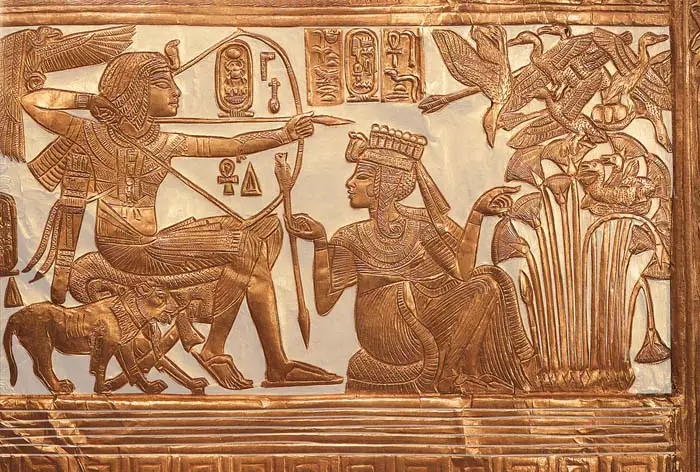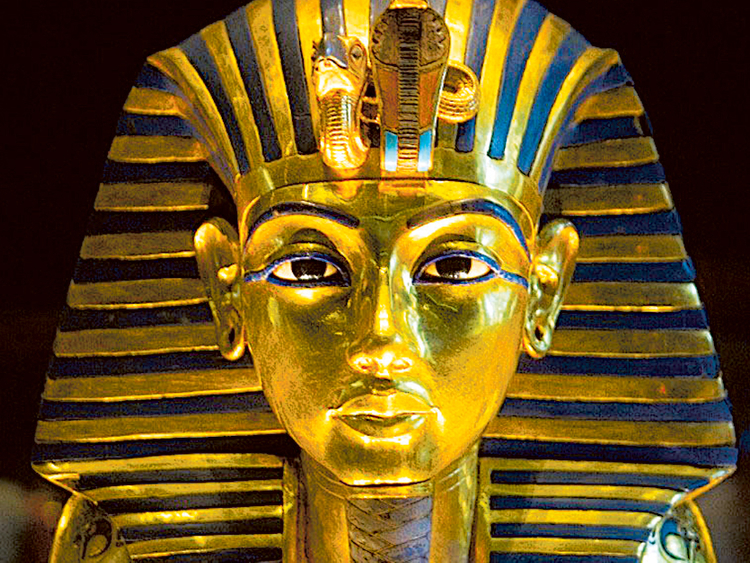The Egyptian Museum is a magnet for many visitors to Cairo.
There is no place like this - where else can you see so many Egyptian artifacts
in one place? I love the Egyptian Museum, but I feel a commitment to make sure
everyone knows the visit is not without challenges. The artifacts are not well
marked - I can't imagine doing them without a guide or, at least, a guide.
Guides can be reserved in the yard outside the museum - presumably
"official", but I cannot confirm. Many hotels catering to Westerners
can recommend guides, and you can also find guides through travel books.
The exhibits are arranged somewhat randomly, the lighting is
not great, and billboards - if any - do not provide much information about the
artifacts. And for the photo celebrities, I have bad news: cameras are not
allowed inside the museum. You should check the cameras at a gate in the yard,
and the bag inspection machine and security guards ensure that you cannot slip
into them. Phones are allowed, but documents roam around in showrooms and can
fine to take secret photos (or make you erase them).
But that entire aside, the museum is full of impressive
artifacts from the ancient kingdom to the period of Roman rule.
Top 5 Must See Items At The Egyptian Museum:
(1) Mummy Rooms.
The museum entry fee does not include
visiting the mummy rooms, which cost an additional 100 pounds (about $ 15), but
these rooms must be visited. Each mummy occupies its own temperature control
box, and visitors can still see many features, including fingers, nails, teeth
and hair. The best preserved mummy is probably the malignant Ramses II, who
ruled for 67 years and fathered over 100 children. His long white hair (which
may have been yellow during mummification) testifies to his age at his death.
(2) Cap-Aper Statue.
This gorgeous wooden sycamore
statue differs from anything else in the museum. The oldest priest in the
ancient kingdom was charged with praying for the dead, and his lifelike eyes,
made of copper, quartz and rock crystal, seem to stare at visitors. Ca 'Aper
stands with his left foot in front of his right hand, a sign of strength and
strength, and his round stomach - a sign of wealth - is covered in a straight
skirt. Senior in room 42.
(3) Tut's Canes.

Although he was still a teenager when he
died, King Tut suffered from a number of ailments, including the club's foot,
which necessitated the use of sticks. In the atrium outside the mask room, one
of the cases displays over 100 reeds in Tut's tomb. The handles of many canes
carved into the shapes of Egypt's enemies - the round African head cane are
distinct in shape and features from Asian cane that has the shape of its beard
and almond-shaped eyes.
(4) Seneb Statue.

In room 32, you can see a statue of Seneb and his happy family. If you look
carefully, you will notice that Seneb was a dwarf, but the sculptor cleverly
placed the sons of Seneb below to hide his short legs. Snape sits beside his
affectionately-embraced wife.
(5) Tut Mask.

Most of the museum's upper floor is
dedicated to treasures unearthed in the tomb of Tutankhamun. Among the most
famous of these treasures, of course, is his death mask, which can be found in
room 3. The back of the 11 kg pure gold mask shows simple wear, but the facade
is almost perfect. Room 3 also contains some fine jewelry of blueberry and two
coffins, one of which is made of pure gold and the other is gold-plated.
Egyptologists seem to disagree over the killing of 19-year-old Tut, although we
know from recent tests on his mummy that he has malaria.


No comments:
Post a Comment